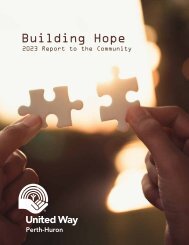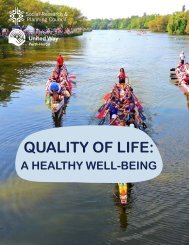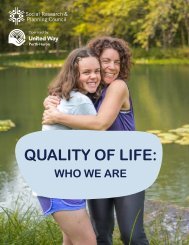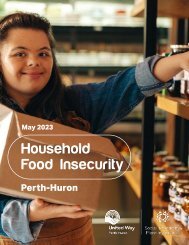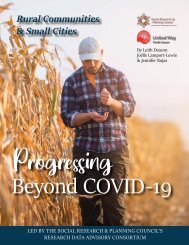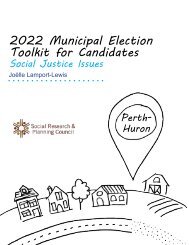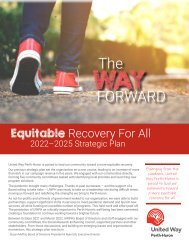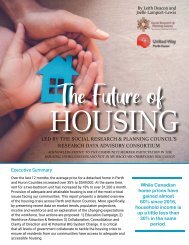2021 Supportive Housing Report
This report is designed to help enhance an understanding of homelessness and the role supportive housing can play within a larger strategy to end chronic homelessness. It provides an overview of best practices being implemented to address chronic homelessness; references supportive housing strategies that help people with the most complex mental health and addiction needs to stabilize their housing; and offers strategic actions for consideration to support the Huron and Perth communities toward achieving their goals of eradicating chronic homelessness and supporting their most vulnerable citizens.
This report is designed to help enhance an understanding of homelessness and the role supportive housing can play within a larger strategy to end chronic homelessness. It provides an overview of best practices being implemented to address chronic homelessness; references supportive housing strategies that help people with the most complex mental health and addiction needs to stabilize their housing; and offers strategic actions for consideration to support the Huron and Perth communities toward achieving their goals of eradicating chronic homelessness and supporting their most vulnerable citizens.
You also want an ePaper? Increase the reach of your titles
YUMPU automatically turns print PDFs into web optimized ePapers that Google loves.
features, including a centralized database that collects<br />
and displays real-time data on clients and available<br />
housing and supports; clear access points of entry;<br />
common assessment; standardized protocols; and<br />
resources (for example, staff) focused on ensuring that<br />
people can connect with appropriate housing and<br />
housing supports in an efficient manner. 48 As noted in<br />
Figure 3, Coordinated Access is a process through which<br />
individuals and families experiencing homelessness or<br />
at risk of homelessness, are provided access to housing<br />
and support services, based on a standardized set of<br />
procedures for client intake, assessment of need and<br />
matching and referral to housing.<br />
Coordinated Access involves four core processes:<br />
access, assessment, prioritization, and referral (or<br />
matching). Reaching Home, Canada’s Homelessness<br />
Strategy Directives, outlines the components and<br />
processes communities can implement to address<br />
homelessness by building an effective and integrated<br />
Coordinated Access System.<br />
For communities, coordinated access is essential in<br />
moving towards an integrated systems approach with a<br />
common decision-making process and common goals,<br />
rather than a collection of independent service<br />
providers making individual decisions. Coordinated<br />
access helps to highlight areas where there are gaps in<br />
local services, reduces service duplication, and provides<br />
seamless service delivery for individuals and families.<br />
How do we identify who is homeless in our<br />
community?<br />
The journey to housing homeless people especially<br />
those with serious and persistent mental health and<br />
addictions needs is not a straight path. Identifying<br />
community homelessness is the first step. Getting to<br />
know the people in your community who are<br />
experiencing homelessness, their vulnerability and<br />
support needs are crucial steps towards linking them<br />
with appropriate housing services.<br />
Figure 3: What is Coordinated Access?<br />
Source: Reaching Home: Canada’s Homelessness Strategy Directives<br />
8 <strong>Supportive</strong> <strong>Housing</strong>



